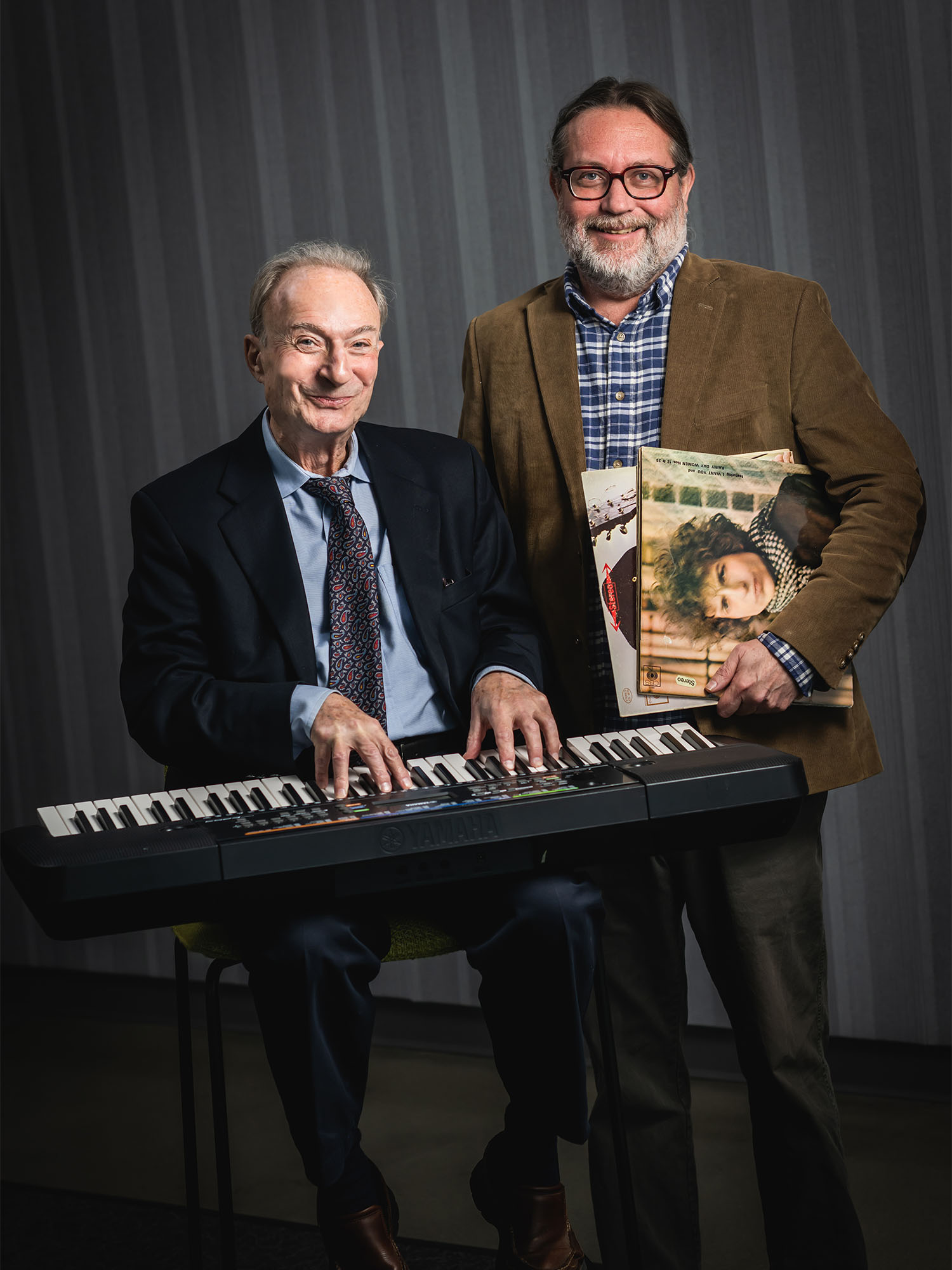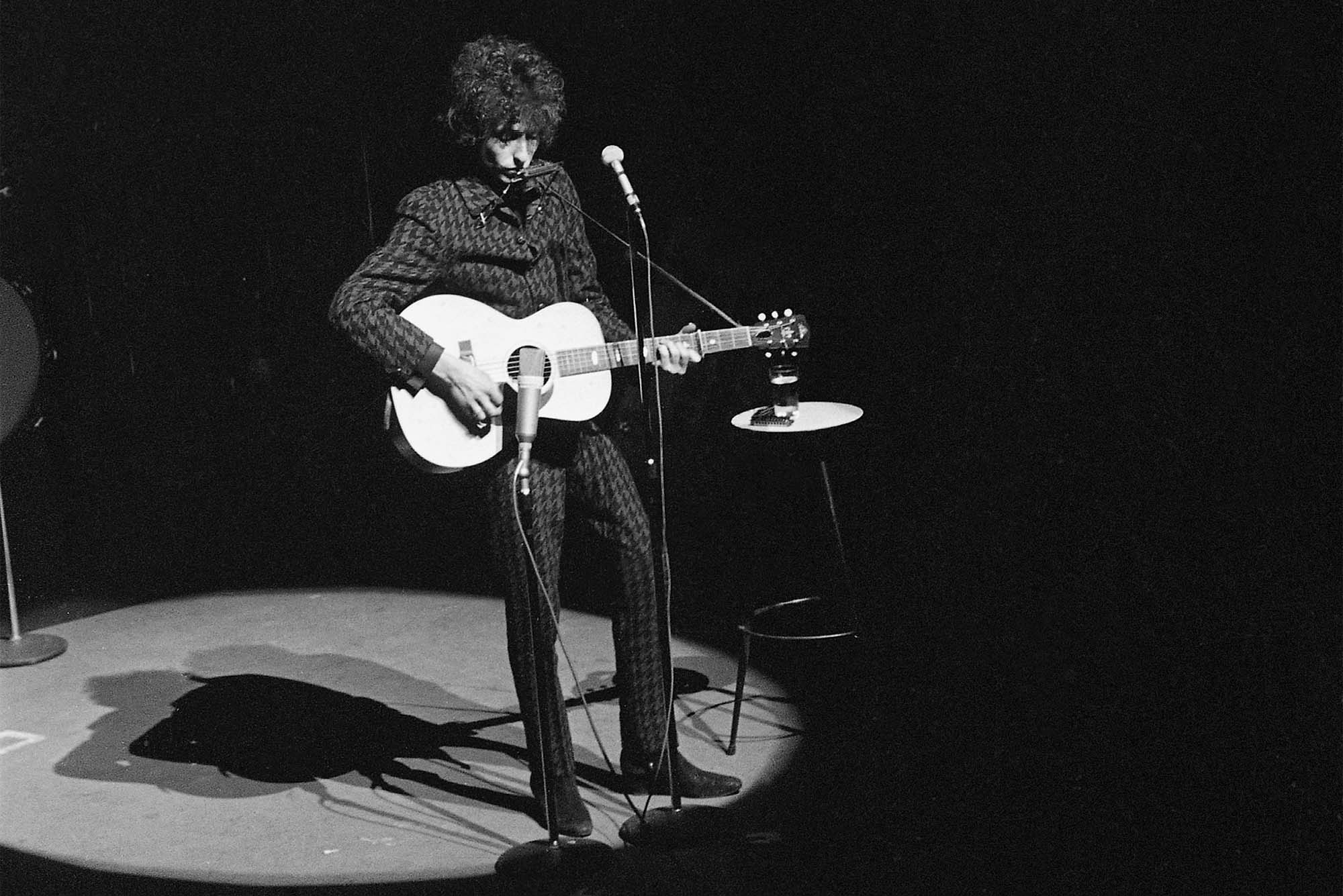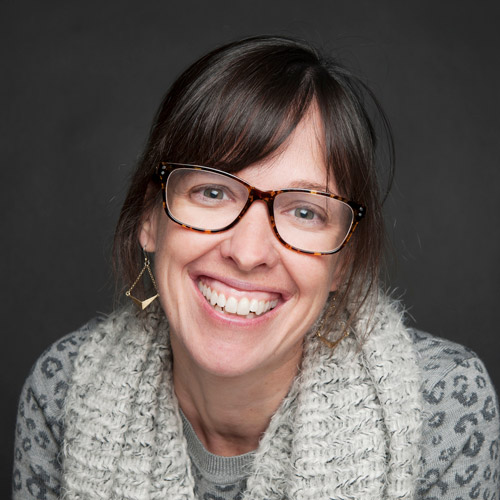Tangled Up in Bob Dylan for 15 Years at BU

Kevin Barents (right), a CAS Writing Program master lecturer, has been teaching a course on Bob Dylan since 2008. In 2016, he was joined by Jeremy Yudkin (left), a CFA professor of music, who added an interdisciplinary element to the course.
Tangled Up in Bob Dylan for 15 Years at BU
Since 2008, Terriers have analyzed the poetry and song structure of the voice of a generation thanks to a pair of BU professors
A young Kevin Barents discovered the music of Bob Dylan soon after graduating James Madison University in 1996. As an aspiring poet and writing instructor, Barents connected to the singer’s notoriously elaborate lyrics and storytelling.
“Nobody has been as expansive as Dylan in terms of so many styles, so many emotions, so many themes,” says Barents, now a master lecturer in Boston University’s College of Arts & Sciences Writing Program. “There’s not just one Dylan.”
In 2008, Barents introduced Bob Dylan’s Lyrics to the Writing Program, a course that taught students to examine poetic structure and figurative language through songs like “Visions of Johanna” and “Tangled Up in Blue.” Some 15 years later, Barents’ determination to keep the singer-songwriter’s name, along with his lyrics, on the lips of new generations is still going strong. The course was a smash hit with students, and it spawned more Dylan-centered teaching at BU, using the legendary songwriter as a central character to teach students about song structure, artistic intent, and cultural critique. A decade and a half—and a major restructuring of the course—later, and it still fills up with aspiring writers and musicians, and fans.
“For a while it was almost the only thing I was teaching in the Writing Program,” Barents recalls. “I’d teach maybe five or six sections of that [a year] for a few years.”
These days, college courses organized around a popular singer’s song catalog are increasing in popularity—especially if the singer in question is Taylor Swift. But in 2008, a Bob Dylan course was a relatively novel proposition, and it made a splash. NPR soon caught wind—and so did Jeremy Yudkin, a professor of music at the College of Fine Arts.
“I wrote to him and said, ‘Let’s do this together,’” says Yudkin, whose background is in musicology and whose research ranges from medieval polyphony to Beethoven to the Beatles (he teaches a CFA music history course on the Fab Four).

That was in 2009. But the two weren’t able to launch the interdisciplinary course they had in mind, Bob Dylan: Music and Words, until 2016, when BU’s Center for Teaching & Learning began administering interdisciplinary course development grants to faculty.
“We got the very first grant they gave,” Yudkin says. “Ironically, despite all the pushback, and people saying Dylan is no big deal, it’s not really serious music, it’s not really serious poetry, we got the grant and then Dylan got the Nobel Prize.”
Although both Yudkin and Barents qualify as Dylanologists, the course they had in mind was “not just a class on Bob Dylan…[but] a more general appreciation of both poetry and music.” The interdisciplinary aspect, drawing on Barents’ scholarship in CAS and Yudkin’s in CFA, would be an experiment in coeducation, incorporating textual and auditory analysis, plus a heavy dose of pop cultural history. A hybrid lecture class and discussion seminar, the course began in fall 2016, as an offering in the CFA music and Graduate School of Arts & Sciences American & New England Studies Program (AMNESP) course catalogs.
“I was a bit apprehensive about collaborative teaching, and it took me a little while to get used to it,” Yudkin says. “I spent 24 years figuring out exactly the trajectory of a course over an hour and a quarter, what I’m going to do when, and so on.”
“And I ruined all that,” Barents jokes.
“It’s gotten to the point where I don’t even have to look at a clock—I’m now so adapted to having someone else in the room having ideas about what to do.”
In class, Barents and Yudkin play off each other’s relationship with the Dylan catalog, infusing their lectures with anecdotes and fun facts (did you know that the understated John Wesley Harding was, at the time, Dylan’s highest charting album?). In discussions on lyrical intent and album flow, each asks probing questions of students about how effective they found a turn of phrase or use of session musicians. Yudkin often demonstrates music theory principles on his keyboard.
The goal of the course is to give students the analytical skills of a cultural critic; one assignment even asks them to pen a Bob Dylan song and then write a review for it. The syllabus is structured to follow the progression of Dylan’s early albums, from his self-titled debut through the “electric trilogy”—Bringing It All Back Home, Highway 61 Revisited, and Blonde on Blonde—and ending with 1975’s Blood on the Tracks, which some, including Barents, consider his best (Yudkin prefers Blonde on Blonde). Guest speakers have included a CFA guitar instructor, an executive producer of NPR’s All Songs Considered, and Christopher Ricks, BU’s William M. and Sara B. Warren Professor of the Humanities and author of Dylan’s Visions of Sin (HarperCollins, 2004).
Ricks, whom Barents and Yudkin cite as an inspiration for the course content, made their acquaintance “ages ago,” according to Ricks, and early conversations about Dylan were spent “noticing how much, and how variously, he notices, and noticing the relations between what he notices.”
In a class on 1969’s Nashville Skyline, an album of croony, intimate country songs, Barents, Yudkin, and teaching fellow Ryan Deneen (GRS’29’29), an AMNESP PhD candidate, begin a group discussion by asking students, “Does this album make Dylan sexy?” The unanimous response: not really.

The voice of a generation sometimes gets a mixed response in this class. In one discussion group, a student acknowledges that he doesn’t like the backing band on Blonde on Blonde because it “sounds like circus music”; another notes that some of Dylan’s lyrics strike them as misogynistic. One student says he simply didn’t enjoy listening to a full album’s worth of Dylan songs at a time.
“I think a lot of our students didn’t grow up with Dylan front and center,” Barents tells BU Today. “That’s something that’s changed a lot over the years.”
Well, the times they are a-changin’.
Still, Yudkin notes, the course consistently fills up with CAS and CFA students within about an hour of its listing. Those who sign up are a mix of music students, Dylan fans, and those curious what the fuss is about.
“Within the context of Dylan’s music, you could argue that this is a very basic musicology class,” Embie Burger (CFA’25) says. “We’re looking at all of the albums chronologically, so we’re seeing him as an artist throughout time, which impacts his identity and plays into the types of music that he makes.”
“It’s been really cool to analyze music that I hadn’t done before,” says Billy Sanders (CAS’24). “I think once you have that understanding, then you can enjoy music on another level.”
And that, Barents and Yudkin say, is the essence.
“When we designed the course, we said, Dylan’s a fascinating person and you could spend all day talking about his life and relationships and stunts and all that, but we really wanted to focus as much as we could on the work itself,” Barents says.
“I think that the reason that [the course] holds up,” Yudkin adds, “is because the music and the lyrics are so brilliant.”


Comments & Discussion
Boston University moderates comments to facilitate an informed, substantive, civil conversation. Abusive, profane, self-promotional, misleading, incoherent or off-topic comments will be rejected. Moderators are staffed during regular business hours (EST) and can only accept comments written in English. Statistics or facts must include a citation or a link to the citation.